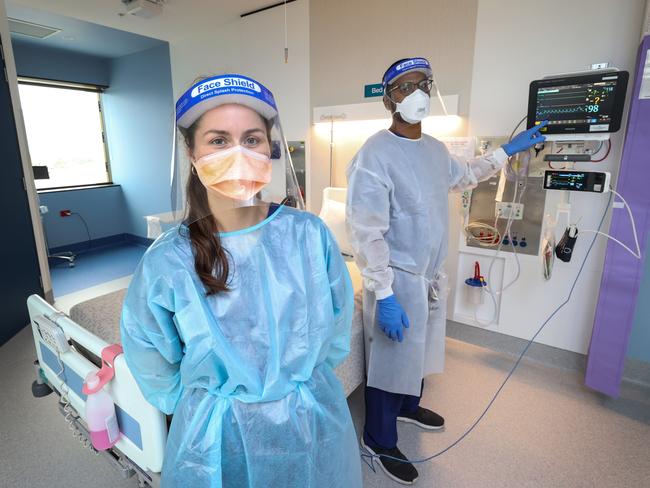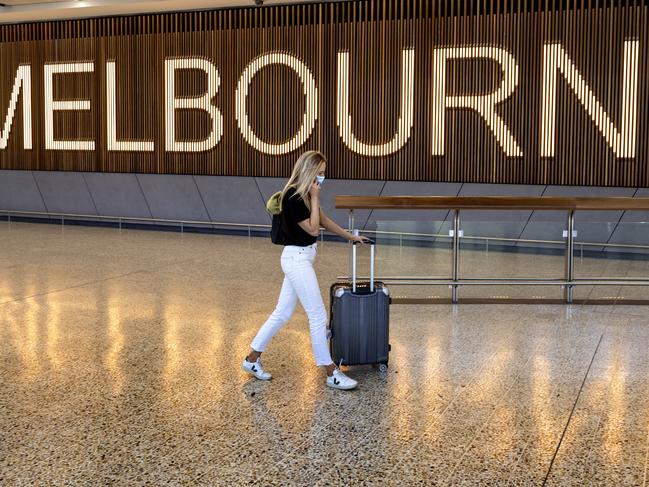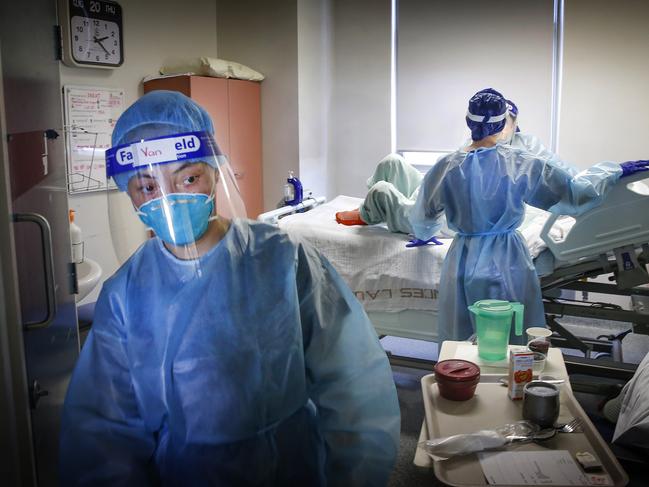What happens when Omicron becomes Victoria’s dominant strain
A Covid expert says Victoria may need tougher restrictions to curb the spread of Omicron but says the new variant has one “big silver lining”.
Coronavirus
Don't miss out on the headlines from Coronavirus. Followed categories will be added to My News.
Epidemiologists say hospitalisation rates are likely to drop when the Omicron variant becomes Victoria’s dominant strain.
University of Melbourne epidemiologist Professor Tony Blakely said Omicron was expected to overtake Delta in Victoria in the next one to three months.
Professor Blakely said that would result in a spike in cases because the new variant was “much more infectious” but he predicted fewer people would end up in hospital.
“I’m hopeful that Omicron has a big silver lining,” he said.
“What we do know is that if the case numbers go up to 5000 per day we’d probably have the same hospitalisation rate as 1000 or 2000 cases of Delta. We don’t know exactly the equivalence but we’re pretty confident the hospitalisation rate would be much less.”

Professor Blakely, who helped provide modelling for the Victorian government’s roadmap out of lockdown in 2020, warned there may still be a need for stricter rules to reduce the community spread of Omicron.
“Things like ensuring mask wearing in all settings, reinstituting density limits, people working from home, all that sort of stuff without using the l-word, the lockdown word. We will have to have those things in the toolbox ready to go in case this gets away from us.”
Victoria recorded 1622 new Covid cases on Thursday – the highest daily tally for more than two months.

There were three new Omicron cases in Victoria on Thursday, bringing the state’s total to 13.
Chief health officer Brett Sutton on Wednesday said: “I think we’ll see a significant increase in our Omicron cases”.
“The story globally is that it’s doubling every two to three days,” professor Sutton said.
Professor Blakely said he expected a sharp rise in cases with more people attending end-of-year parties and travelling over Christmas.
Deakin University’s Chair of Epidemiology Catherine Bennett said there would be some advantages if Omicron displaced Delta as Victoria’s dominant strain.
Professor Bennett said international data suggested hospitalisation rates were lower among Omicron cases and, importantly, time spent in hospital was also lower.
“From a resource point of view you can cater to twice as many cases in hospital if they’re only there for half the time,” she said.
“So all those things just make it a bit easier to manage as an illness.”
She said as Omicron cases grow, the key measurement Victorians should be watching was the number of people in ICU and on ventilators.

Australian National University infectious diseases Professor Peter Collignon said he was reassured by the early international evidence of Omicron’s severity.
“So far we’re not seeing all the dire predictions that were made two or three weeks ago,” he said.
“If those predictions were true we’d be seeing it in England and Denmark. If it really was much worse for you than Delta, then I would expect we’d already see a lot of immunised people in hospital with Omicron and we would see in the unimmunised a lot more deaths. And we’re not seeing either of those.”
NEW RESEARCH SHEDS LIGHT ON OMICRON
A study from South Africa released this week suggested people infected with Omicron were less likely to end up in hospital.
The research from private health insurance company Discovery Health found there was a “significantly steeper trajectory” of new Omicron infections compared to previous Covid waves but the risk of severe disease or hospital admission was “significantly lower”.
The study was based on more than 211,000 positive COVID-19 test results, 78,000 of which were Omicron.
Results suggested the Pfizer vaccine was not as effective against Omicron as against Delta.
Professor Sutton described Omicron as “another punch that none of us wanted”.
“We know that with Omicron there has been some vaccine breakthrough but there’s good evidence that having had your booster shot will protect you from serious illness,” he said on Wednesday.
He said projecting the growth rate of Omicron in Victoria was “highly uncertain”.
“I think it’s pretty clear it’s a very steep trajectory wherever we’ve looked. Where it tops out is unclear. Exactly what might drive numbers back down is to be determined.”




